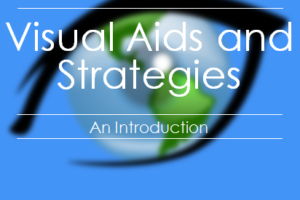A traumatic brain injury also referred to as TBI, “occurs when an external mechanical force causes brain dysfunction.” (Mayo Clinic) It often results from a violent or sudden blow or rotational jolt to the head or body, a shattered skull, an object penetrating the skull or internal bleeding within the skull. Depending on the nature of the event and/or the force of impact, the injury can result in temporary dysfunction of brain cells, bruising, bleeding, torn tissue or other physical damage leading to long-term complications, even death.
Common events causing traumatic brain injury include:

✓ Falls
✓ Vehicle-related collisions
✓ Violence
✓ Sports injuries
✓ Explosive blasts
✓ Combat injuries
All concussions are traumatic brain injuries, but not all traumatic brain injuries are concussions. Trauma is a medical term that denotes damage to the body through the application of force. Traumatic brain injury can have psychological and physical effects. Signs and symptoms may appear during the onset of the traumatic event, hours, days, or even weeks later. An individual experiencing a mild traumatic brain injury usually requires little treatment outside of rest and over-the-counter pain relievers. However, a person with a moderate or severe traumatic brain injury should seek immediate medical care.
There are two basic categories for TBI: Closed or Open.
Open
An open traumatic brain injury refers to the skull being broken or removed, allowing the outside force to act directly on the brain. A gunshot wound to the head would likely cause an open traumatic brain injury as the bullet enters the skull and comes in contact with the brain.
Closed
Closed traumatic brain injuries (also called “closed head injuries” or “CHI”) happen through an intact skull. This basically means that the energy is transferred through the skull and surrounding tissues, but the external object causing the force never comes in direct contact with brain matter.
Both open and closed traumatic brain injuries can be devastating. Open probably seems very obvious but closed traumatic brain injuries are potentially just as dangerous.
Signs and symptoms may include:





✓ Loss of consciousness
✓ Feeling of being dazed, confused or disoriented
✓ Memory loss
✓ Difficulty concentrating
✓ A headache
✓ Dizziness
✓ Slurred speech
✓ Loss of coordination or balance
✓ Nausea or vomiting
✓ Blurred vision
✓ Ringing in the ears
✓ Bad taste in the mouth
✓ Sensitivity to light or sound
✓ Mood changes or mood swings
✓ Feeling depressed or anxious
✓ Fatigue or drowsiness
✓ Difficulty sleeping
✓ Sleeping more than usual
✓ Convulsions or seizures
✓ Dilation of one or both pupils of the eyes
✓ Clear fluids draining from the nose or ears
Each patient recovers differently, because each TBI is unique. After a traumatic brain injury (TBI), the body often begins a remarkable repair process. Unlike the skin, the brain does not heal by forming new cells. Instead, existing cells will change to make up for the lost cells. In most cases, brain swelling subsides within a few weeks and the pressure inside the skull stabilizes. This is the time when recovery is most rapid. The brain’s chemical balance returns to normal within several months. And while the damaged connections between nerve cells will not grow back, research has shown that some new connections may develop between these cells over an extended period of time. polytrauma.va.gov

If an individual experiencing a traumatic head injury lacks communication skills to express sensory problems, confusion, headaches or other symptoms, observe for abnormalities in daily life behaviours and routines. Look for changes in eating or sleeping habits, persistent crying, irritability, attention span, depression or sadness and/or loss of interest in a favourite item or activities.
Some individuals who have experienced a TBI may require relearning basic life skills to enable them to perform daily activities, communication, and interpersonal skills.
RELATED LINKS:
biac-aclc.ca
traumaticbraininjury.com
newswire.ca
mayoclinic.com
Workshop Presentation - Visual Aids and Strategies
Contact Vizually Speaking today to learn how Visual Aids and Strategies can decrease the undesired behaviour(s), improve communication, promote independence and increase self-confidence. Through our dynamic presentation you will:
✓ Uncover the importance of using Visual Aids and Strategies.
✓ Discover the benefits of Visual Aids and Strategies.
✓ Learn how to overcome communication barriers.
✓ Promote independence and decrease undesired behaviours.
✓ Be introduced to NEW resources.
EVERYONE benefits from Visual Aids!

Vizually Speaking understands that finding time in today’s high demanding world to create visual aids and strategies can be a great challenge. Vizually Speaking is committed to collaboratively work together providing a step by step support, assisting in the development and implementation of individualized visual aids and strategies. For a FREE consultation contact us TODAY!




